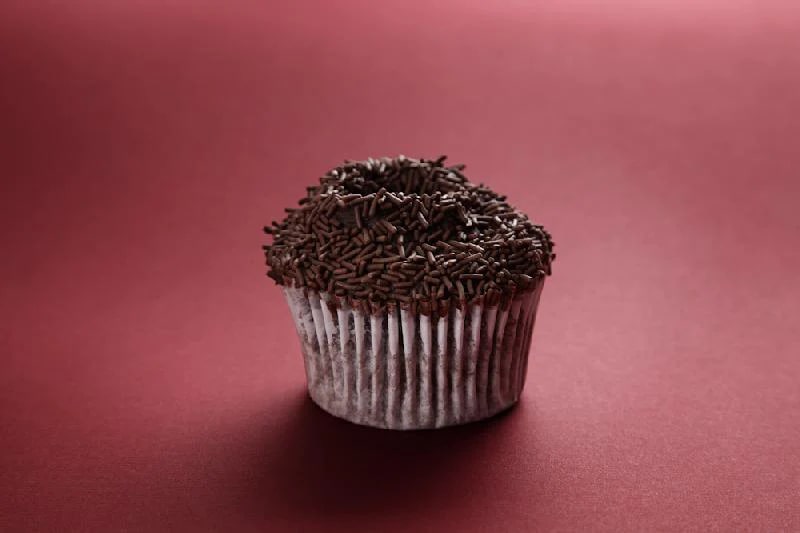Baking with chocolate

The Aztecs prized it, the Europeans fell in love with it and now chocolate is one of the world’s best-loved treats. Here’s how to get the best out of your bar.
Chocolate cake, gooey brownies, melt-in-the-middle puddings and chocolate cookies. We could go on! Everyone has a soft spot for chocolate and if you bake often you’ll need to know a few basics to know your cacao from your couverture.
Choosing which chocolate to bake with is a matter of checking the recipe to see if it calls specifically for milk, dark, white or cooking chocolate and getting the best quality chocolate you can afford of that type.
How is chocolate made?
Chocolate (and cocoa powder) are made when ripe cacao pods are harvested and the beans inside removed and fermented. This gives chocolate its flavour. There are more than 600 volatile compounds in chocolate that give any one bar its particular taste.
The beans are dried in the sun and then sent for manufacturing. The cocoa nibs are extracted from the beans and this is then ground and made into a liquid called chocolate liquor.
Chocolate liquor is used to make the cocoa solids and cocoa butter that make up the basis of the chocolates that we know and love.
Types of chocolate
Cooking/baking chocolate
Chocolate for baking is available primarily in bars and chips and it can be unsweetened or sweet. Unsweetened cooking chocolate has the benefit that that it doesn’t add sweetness to the recipe.
Milk chocolate
Sweet, creamy and perfect for eating. Milk chocolate is the nice guy of chocolate! We can’t get enough of milk chocolate, which balances creaminess and depth of flavour and has many uses in baking. It usually has up to 50% cocoa solids.
Dark chocolate
A bit of a moodier character but very sophisticated and can be complex in flavour. This is all down to the high cocoa content. Good quality dark chocolate of 70% cocoa solids or above is ideal for baking, making ganaches and mousses and is great for throwing into tray bakes and brownies. Nowhere near as sweet as its milk or white counterparts, but some varieties can be full of interesting fruity flavours which sweeter chocolates lack.
White chocolate
Super sweet and very creamy, even too sweet for some. This bar skips the cocoa liquor that goes into milk and dark chocolates and combines cocoa butter with sugar to give a quick melting chocolate.
Couverture chocolate
Extra cocoa butter gives couverture chocolate a creamy taste, a glossy surface and a satisfying snap. This usually has 32-39% cocoa butter and is considered a very high quality type of chocolate.
Chocolate FAQs
How to buy chocolate
Look for the cocoa percentage on the bar. This tells you how much of it is cocoa solids and the higher the percentage the darker the bar.
How to chop chocolate
Serrated knives do an easier job of cutting through blocks of chocolate than straight ones due to the compression of the bar.
How to melt chocolate
As chocolate melts easily on your fingers or on your tongue, it’s important to remember that it doesn’t take a high temperature to turn chocolate from solid to liquid.
When baking, melt your chocolate over a bain-marie (water bath) and ensure that the bottom of the bowl the chocolate is in doesn't touch the hot water. Put the water on a gentle simmer and let the heat from the steam slowly melt the chocolate in the bowl. Gently give it a stir now and again until completely melted and smooth.
You can melt chocolate quickly in the microwave, but watch it like a hawk so it doesn’t burn. Check on it frequently and don’t over-stir or you risk making it seize up and go grainy. Melt for 1 minute and then check back and do 10 second intervals in the microwave if there are any solid lumps left. Be generous in letting the residual heat of the bowl and melted chocolate do the work to melt remaining lumps where possible.
How to store chocolate
Keep your chocolate in a cool dry place away from sunlight where it won’t melt. You don’t need to refrigerate chocolate as this can affect the flavour and texture.
What is chocolate bloom?
This is either due to moisture in the environment (sugar bloom) or changes to the fat in the chocolate (fat bloom). The white spots that appear on your chocolate aren’t harmful and are safe to eat, they just affect the appearance, so go ahead and melt your chocolate for use in recipes.
